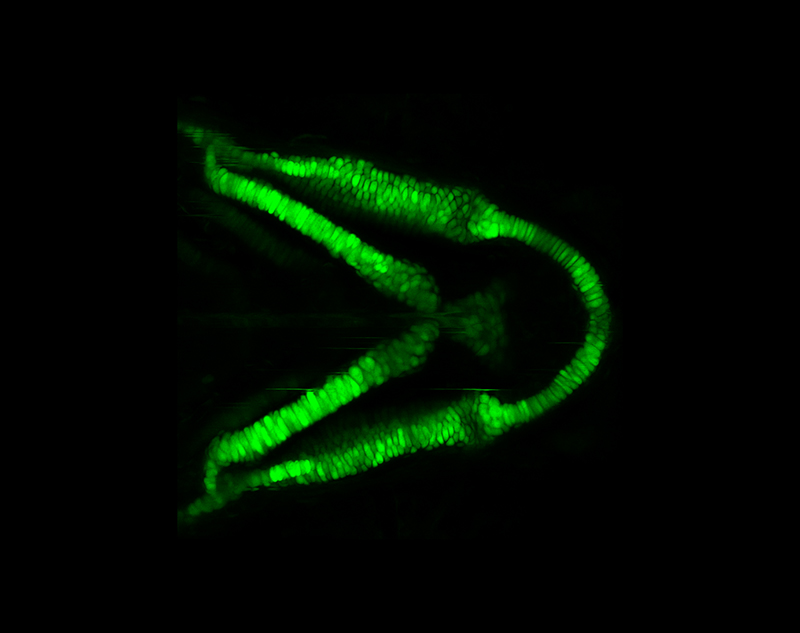
Cartilage does a lot more than determine the shapes of people’s ears and noses. It also enables people to breathe and to form healthy bones — two processes essential to life. In a study published in Cell Reports, USC Stem Cell researcher Xinjun He and University of Tokyo researcher Shinsuke Ohba explore how a protein called Sox9 regulates the production of cartilage.
“Our paper is a blueprint of how the cartilage-producing cell, called a chondrocyte, is made and maintained by Sox9,” said He, a postdoctoral research associate in the lab of Andy McMahon, director of the Eli and Edythe Broad Center for Regenerative Medicine and Stem Cell Research at USC.
The researchers found that Sox9 can bind to the DNA of cells in different ways. In some cases, Sox9 proteins form pairs that bind directly to the DNA in the presence of molecular modifiers. When this particular type of Sox9 binding occurs at multiple sites along the DNA, it turns on the genes that make the cells into chondrocytes.
In this type of binding, Sox9 and the DNA don’t fit together perfectly. The researchers hypothesize that the sub-optimal fit could be a way of controlling the amount of proteins that genes make in chondrocytes, and therefore the amount of cartilage, produced by the body.
Interestingly, this Sox9 binding works similarly in cartilage of very different origins —ranging from the nose to the ribs.
“Sox9 is essential to normal skeletal development throughout the body,” said McMahon, one of the corresponding authors on the study. “When people have a Sox9 mutation, they can suffer from a devastating condition of bent bones and respiratory failure called campomelic dysplasia. Our study advances our knowledge of Sox9’s role in causing this terrible disease — and brings us one step closer to understanding how to potentially treat it.”
Hironori Hojo, a postdoctoral research associate in the McMahon lab, is also an author on the study.
The work at USC was supported by National Institutes of Health grant DK056246, and the work at the University of Tokyo was funded by a Grant-in-Aid for Scientific Research (23689079, 26713054, 15K15732, 24240069, and 26221311) from the Japan Society for the Promotion of Science, a Takeda Science Foundation Research Grant, the Graduate Program for Leaders in Life Innovation, and the Core-to-Core Program A Advanced Research Networks.
